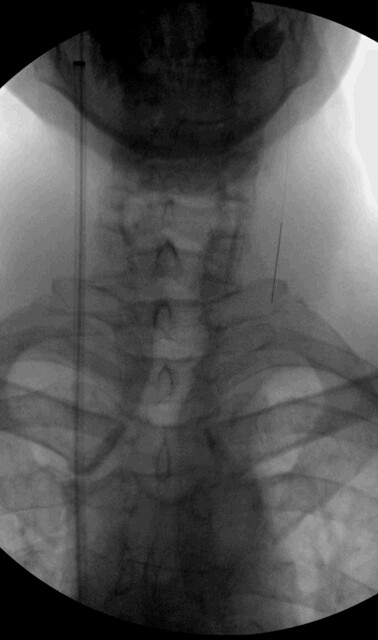Cece wrote:I can't tell if it is the full catheter or just the guide wire. Up the right jugular, across the sinuses, down the left jugular. The sinuses can be sensitive, with the potential for enduring pain after the procedure if they get transversed (based on what I've heard of one other person's experience). Some reasons to do this might be if the patient had a suspected blockage in the sinuses or if the left jugular had a blockage in the area of the valves that had resisted catheterization. In the latter case, a rendez-vous procedure might be tried before trying to approach the jugular through the sinuses.
Could this be the continuation of MikeInFL's wife's case?
you are on the right track, Cece. Thisis a 0.014 inc floppy platinum tipped nitinol wire that I used initially to guide the IVUS probe along the veins. I found that i could use this wire during the entire catheterization after placement of the sheath in the superior vena cava. for example, i can inject contrast media through the catheter and still leave this wire in place because the end-hole of the catheter is 0.038 inches in diameter and this guidewire does not occlude the tip. This is very helpful in reducing wire exchanges. It is also a very floppy tip that reduces considerably the risk of injuries.
In this case, it was possible to advance the wire from one transverse sinus to the other. You are correct. There was an occlusion of the right left jugular vein that occured from a prior procedure by another physician. By using the wire, i was trying to create a landmark that was definitely in the internal jugular vein. If I were lucky, i might be able to advance the wire down into the left innominate vein.
When the vein is occluded (thrombosed), especially, as in this case, for a long time, the collateral veins dilate. External ultrasound can be confusing and the collaterals can mimic an internal jugular vein. Puncturing those collateral veins in the neck in a rendevous procedure will be useless.


